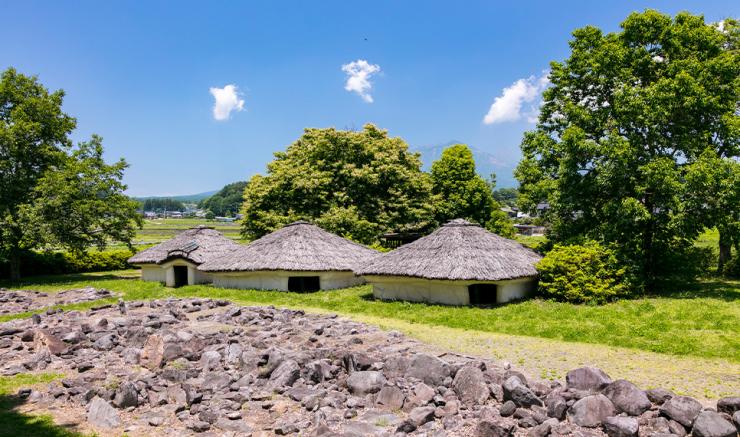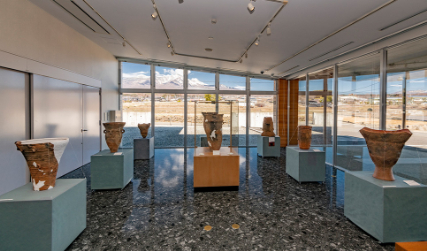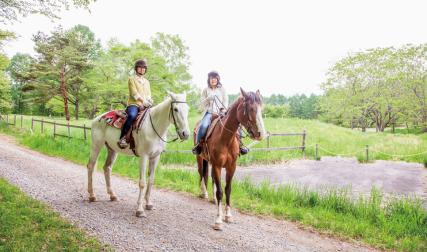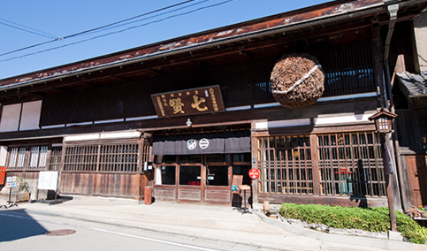Kinsei Iseki Park
Main content starts here.

Kinsei Iseki Park on the southern foot of the Yatsugatake Mountains is a historical park marking the location of the Kinsei ruins, a prehistoric archaeological site and a designated National Historic Site. Excavated in 1980, the area consists of two ruins: first of a settlement from the Late and Final Jomon periods, which run from circa 2,470 BCE to circa 300 BCE, and a later site of a castle from the Warring States period (1467-1568). In the Jomon period ruins, the foundations of around 40 dwellings were discovered. The reconstructed dwellings standing in the park today are small huts with earthen floors and walls and thatched roofs, and are one way of imagining how these dwellings may have looked.
Large stones arranged in squares and circles were found here and restored. Some of the rocks are granite and are believed to have been transported from the remote Kamanashi River. It is believed that the stone arrangement marks a tomb and a site for religious rituals. One explanation for the site’s religious significance is that on the winter solstice, the setting sun aligns perfectly with Mount Kaikoma when viewed from Kinsei Iseki Park, and people may have gathered here to pray at that time.
Most of the artifacts from the site are on display at the nearby Hokuto Archaeological Museum. Another, older Jomon-period settlement was discovered more recently at what is now Umenoki Iseki Park nearby.
Category
Area
Share
Venue Address
409-1502 105 Oizumicho Yato, Hokuto-shi
-

History & Culture
-

Attractions
-

History & Culture
Home of Mt. Fuji > Discover > Kinsei Iseki Park